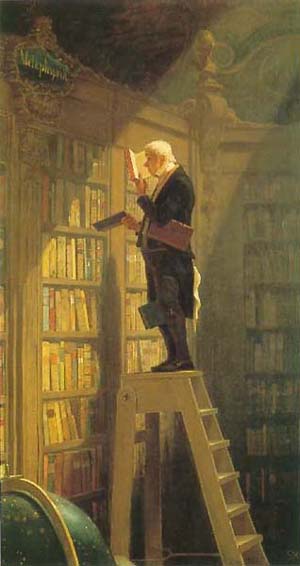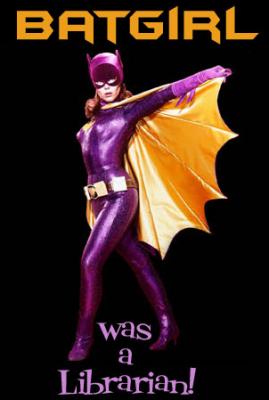 Stumbled across an interesting website that I'd like to call your attention to--AbeBooks' Weird Book Room (Click Here). It is a collection and celebration of everything that's bizarre, odd, and downright weird in book publishing. It includes such titles as the above "Toilet Paper Origami", as well as "Death in the Pot: the impact of food poisoning on History", "50 Ways to use Feminine Hygiene Products in a manly manner", "The Romance of Proctology", and "The Pop-up Book of Phobias". Every one of these titles about all the oddball aspects of life you could imagine (and some that you can't) are for sale. It also highlights the "Weird Book of the Week"--the latest being "The Teach Your Chicken to Fly Training Manual". It's pretty funny. Check it out.
Stumbled across an interesting website that I'd like to call your attention to--AbeBooks' Weird Book Room (Click Here). It is a collection and celebration of everything that's bizarre, odd, and downright weird in book publishing. It includes such titles as the above "Toilet Paper Origami", as well as "Death in the Pot: the impact of food poisoning on History", "50 Ways to use Feminine Hygiene Products in a manly manner", "The Romance of Proctology", and "The Pop-up Book of Phobias". Every one of these titles about all the oddball aspects of life you could imagine (and some that you can't) are for sale. It also highlights the "Weird Book of the Week"--the latest being "The Teach Your Chicken to Fly Training Manual". It's pretty funny. Check it out.
Tuesday, December 29, 2009
Weird Book Room
 Stumbled across an interesting website that I'd like to call your attention to--AbeBooks' Weird Book Room (Click Here). It is a collection and celebration of everything that's bizarre, odd, and downright weird in book publishing. It includes such titles as the above "Toilet Paper Origami", as well as "Death in the Pot: the impact of food poisoning on History", "50 Ways to use Feminine Hygiene Products in a manly manner", "The Romance of Proctology", and "The Pop-up Book of Phobias". Every one of these titles about all the oddball aspects of life you could imagine (and some that you can't) are for sale. It also highlights the "Weird Book of the Week"--the latest being "The Teach Your Chicken to Fly Training Manual". It's pretty funny. Check it out.
Stumbled across an interesting website that I'd like to call your attention to--AbeBooks' Weird Book Room (Click Here). It is a collection and celebration of everything that's bizarre, odd, and downright weird in book publishing. It includes such titles as the above "Toilet Paper Origami", as well as "Death in the Pot: the impact of food poisoning on History", "50 Ways to use Feminine Hygiene Products in a manly manner", "The Romance of Proctology", and "The Pop-up Book of Phobias". Every one of these titles about all the oddball aspects of life you could imagine (and some that you can't) are for sale. It also highlights the "Weird Book of the Week"--the latest being "The Teach Your Chicken to Fly Training Manual". It's pretty funny. Check it out.
Saturday, December 19, 2009
Bringing it to the Table by Wendell Berry
 Wendell Berry is a poet, essayist, farmer, and novelist. Berry has been writing about the "good life", which includes sustainable agriculture, appropriate technology, and healthy rural communities with a connection to place, for the last five decades. For over forty years he has lived and farmed, with his wife Tanya, in Kentucky. He is one of our state's treasures. The essays included in this book, some of them dating back to the 1970s and 1980s were dealing with conservation land practices and mindful eating long before the recent spate of books on those topics.
Wendell Berry is a poet, essayist, farmer, and novelist. Berry has been writing about the "good life", which includes sustainable agriculture, appropriate technology, and healthy rural communities with a connection to place, for the last five decades. For over forty years he has lived and farmed, with his wife Tanya, in Kentucky. He is one of our state's treasures. The essays included in this book, some of them dating back to the 1970s and 1980s were dealing with conservation land practices and mindful eating long before the recent spate of books on those topics.- Participate in food production to the extent that you can.
- Prepare your own food.
- Learn the origins of the food you buy, and buy the food that is produced closest to your home. That means whenever possible to deal directly with the local farmer, gardener, or orchardist.
- Learn, in self-defense, as much as you can of the economy and technology of industrial food production. What is added to the food that is not food, and what do you pay for these additions?
- Learn what is involved in the best farming and gardening.
Friday, December 18, 2009
In Lieu of Flowers: A Conversation for the Living by Nancy Cobb

I lost my kid brother to esophageal cancer recently, and have been in the process of grieving. A friend of mine suggested this book. As the quote from Wally Lamb on the cover of this book says, "This meditation on grieving is personal and persuasive--sustenance for the mind and the soul." And what a lovely book it is. Cobb, a former public radio host and actress, has lost her father to suicide, her mother to Alzheimer's, and a close friend to cancer. In this little gem she shares her encounters and observations in her quest to understand death and dying. Have you lost someone near and dear to you? Are you struggling to comprehend and carry on? Then this book may be just the tonic you need.
As the author says "The crossroads at the end of life--the 'divine intersections' where the living meet the dying and the dying meet the dead--are difficult to discuss, perhaps because we are afraid of the unknown, perhaps because we don't want to sound morbid or New Agey...If we're all going to die, why can't we talk about death?...Death is as sacred and inevitable, as ordinary and extraordinary, as messy and complex, as birth, and yet end-of-life care in America is only just catching up with the natural birthing methods introduced to the delivery room thirty years ago. Why, has it taken us so long to handle our departures as lovingly as we have handled our arrivals?"
Now, if this description hits home, you'll see why this little book just might be the solace for your soul that you need: "After experiencing the death of someone you love, you join a rank-and-file whose number multiplies hourly. Soon you learn, as others have before you, that perspective shifts erratically. Weeks pass slowly. You wonder if that bone-deep physical ache in the center of your chest will ever go away, of if you'll ever finish a paragraph, laugh with abandon, or look at family photographs without falling apart. If your loved one died suddenly you will search your memory obsessively, going over and over the last exchange of words and the predominant feelings between you that day. If you had plenty of time to say goodbye, you'll still wonder if you got it right. Regret is grief's handmaiden. Learning to focus on the life, rather than the death, of a person you have loved and lost requires an enormous emotional effort. You distract easily. You teeter constantly. Car accidents and falls down stairs often occur during periods of mourning. Because you have been cracked open by your experience, imbalance is often a result."
Grieving is part of living. If we live and love, we will grieve. This amazing little book lets you know that you are not alone. In sharing her own experiences with us, Nancy Cobb engages in a longer conversation about loss, encouraging us to accept and honor those we have lost by exploring our feelings rather than avoiding them and in the process confronting and accepting death itself.
After Nancy's mother died, she found the following passage tucked away among her papers. It was written by Henry Scott Holland, a professor of divinity at Oxford University:
"Death is nothing at all--I have only slipped away into the next room. I am I, and you are you. Whatever we were to each other, that we still are. Call me by my old familiar name, speak to me in the easy way you always used. Wear no forced air of solemnity or sorrow. Laugh at the little jokes we enjoyed together. Play, smile, think of me, pray for me. Let my name be ever the household word that it always was. Let it be spoken without the ghost of a shadow on it. Life means all that it ever meant...there is absolutely unbroken continuity. I am waiting for you--somewhere near just around the corner. All is well."
Friday, December 11, 2009
Veil of Lies by Jeri Westerson
 This first installment in a series has Crispin Guest, as a disgraced knight who was stripped of his rank after a treasonous plot against Richard II. He is forced to live by his wits on the streets of London making his living as a Tracker, the medieval equivalent of today's PI. He takes a job from a reclusive prosperous merchant to spy on his wife and find out if she has been unfaithful. When the merchant turns up dead, Crispin must unravel the mystery. Doing so involves a family dispute, a ruthless mob of Italians, and a religious relic, in this enjoyable 14th century tale of murder and intrigue.
This first installment in a series has Crispin Guest, as a disgraced knight who was stripped of his rank after a treasonous plot against Richard II. He is forced to live by his wits on the streets of London making his living as a Tracker, the medieval equivalent of today's PI. He takes a job from a reclusive prosperous merchant to spy on his wife and find out if she has been unfaithful. When the merchant turns up dead, Crispin must unravel the mystery. Doing so involves a family dispute, a ruthless mob of Italians, and a religious relic, in this enjoyable 14th century tale of murder and intrigue. Westerson has created a memorable character in Crispin Guest, who is frustrated by his societal downturn and has to constantly battle those feelings. When in the course of solving this mystery he manages to fall in love with a commoner, he has to come face to face with his own prejudices. This authentically detailed period piece is a real page turner. Westerson has an encyclopedic knowledge of the medieval period and an obvious love for the hard boiled detective genre. Serpent in the Thorns is the next book in the series, and I can't wait to return to the gritty world of 14th century London.
Saturday, December 5, 2009
Giv: The Story of a Dog and America by Boston Teran
 I remember reading a quote somewhere that said this was the Forest Gump of dog books, so of course that was enough for me to want to read it. And I was not disappointed. This is a unique and beautifully written book.
I remember reading a quote somewhere that said this was the Forest Gump of dog books, so of course that was enough for me to want to read it. And I was not disappointed. This is a unique and beautifully written book.There are lots of dog stories out there, so what makes this one any different from countless others? I think the answer to that would be the way it is written. From the very first page, this book is suffused with love, and I think it will touch you deeply. There is an overwhelming sadness and beauty in this book that goes beyond the human canine connection and borders on the spiritual. It is a book that is very much pro small town and exalts the american traits of faith and sacrifice.
The story follows a dog named Giv on his journey across the American landscape from post 9/11, through Hurricane Katrina, and the Iraq war. And through this journey you will experience the heart of a nation. Here's a small quote to show you the flavor of the writing:
"The Pitch of creativity was happening in Ruthie, though she did not know it--she wouldn't for a few hours yet, anyway. It was part of the same volcanic energy that had birthed Marlon Brando, the biker, in The Wild One, who when asked in a California town, "What are you rebelling against?" answered, "What have you got?" It had birthed James Dean and a game of chicken on the Pacific bluffs in Rebel Without a Cause. It spawned The Grapes of Wrath and Dean Moriarity in On the Road and Jack Nicholson on the back of a chopper wearing a football helmet while the Byrds sang "The river, it flows to the sea, and wherever that river goes, that's where I want to be."
It gave us The Call of the Wild and Sullivan's Travels and Travels with Charley and The Electric Kool Aid Acid Test and Vanishing Point and Route 66 and Bob Dylan singing, "Where you want this killing done? God said out on Highway 61." There's Johnny Appleseed and Ishmael, though his road was the sea, and The Leatherstocking Tales and It Happened One Night and Superman and The Incredible Journey and John Wayne in The Searchers promising he would find his kidnaped niece "just as sure as the turning of the earth," and Robert Frost's "The Road Less Traveled."
This is one of the most moving books I've ever read. It is poignant, powerful, and compelling. It gives me hope for our troubled world. I guarantee this book will touch your heart.
Friday, December 4, 2009
What to give the book lover in your life

This is a book that will help you understand the link between some of America's great literary voices and the landscapes that inspired them. It is, however, more than just a collection of beautiful photographs that make it a pleasure to look at as well as to read. It is a literary pilgrimage of photography and prose that took writer Thomas Hummel and photographer Tamra Dempsey two years and twenty thousand miles to compile. There are over 140 photographs and biographies ranging from James Fenimore Cooper to Washington Irving.
Here's a sample of the section on Willa Cather:

To confront the Divide—a swath of land from the Little Blue to the Republican River in Nebraska—was to feel such a pang of disorientation. But in a short amount of time, the country began to work on Cather. “I was little and homesick and lonely…” she later observed. “So the country and I had it out together and by the end of the first autumn the shaggy grass country had gripped me with a passion that I have never been able to shake. It has been the happiness and curse of my life.”
This is a beautiful and engaging book that manages to capture the natural wonders that influenced some of our favorite writers.
Great Plains: America's Lingering Wild by Michael Forsberg

The great plains were once one of the greatest grasslands on the planet, but in our settling of the west they were ploughed under and fenced in, as well as overgrazed. The grasslands today are some of the least protected and most endangered spots in North America. The photographs, essays, and maps of this book give us a taste of what still survives; the natural communities and native creatures of a vast and extraordinary landscape. Between fall of 2005 and winter of 2008 Michael Forsberg traveled roughly 100,000 miles across 12 states and 3 provinces of Canada to complete the photographic work for this project. There are also essays by Great Plains scholar David Wishart and wildlife biologist and rancher Dan O'Brien. The great plains are in desperate need of conservation and perhaps this beautiful book will help us all to recognize the wild splendor in this irreplaceable part of our planet.
Monday, November 30, 2009
Coloring Contest

He had a series of illustrations created based on some of the book’s stories, including a Kindergartener who thinks he’s French, a puddle of ketchup shaped like Elvis and something called, “Chicken Soup for the Kidnapper’s Soul.”
While the coloring contest sounded like fun, Wensink added a little excitement by offering an autographed stack of his favorite books from 2009 to the winner.
Fool- By Christopher Moore
Tales Designed to Thrizzle – by Michael Kupperman
AM/PM – By Amelia Gray
Help! A Bear is Eating Me! – By Mykle Hansen
The contest ends December 14. So, by all means, visit Patrick's website below, and enter the contest. Those free books could be yours. Somebody's got to win, might as well be you.
For all the details visit www.patrickwensink.com/randomness
Sunday, November 22, 2009
Push by Sapphire
The book is a much anticipated first novel told from the point of view of an obese and illiterate 16 year old called Claireece "Precious" Jones. She lives in Harlem and is pregnant by her father (for the second time). She suffers from constant abuse both physical and mental from her mother. Her first child is called "Mongo"--short for Mongoloid--because it has Down's syndrome. This child is being taken care of by Precious's grandmother. When she becomes pregnant for the second time, she is suspended from school, but she does manage to get into an alternative school and it is here that she experiences confidence and hope for the first time, as she learns to read, starts writing in a journal, and even experiences something that has been missing from her life up till this point--love.
The graphic details in the book are very disturbing and the language is violent and vulgar. So this book will undoubtedly not be everybody's cup of tea. But it has compassion and poetic phrasing that makes your heart break for this fictional character, who does represent what some people unfortunately live.
The poem below is by Langston Hughes. Precious copies it into her journal as a tribute to him, and it does reflect her own life, as well as the underlying philosophy of the book:
Mother to Son
Well, son, I'll tell you:
Life for me ain't been no crystal stair.
It's had tacks in it,
And splinters,
And boards torn up,
And places with no carpet on the floor—
Bare.
But all the time
I'se been a-climbin' on,
And reachin' landin's,
And turnin' corners,
And sometimes goin' in the dark
Where there ain't been no light.
So, boy, don't you turn back.
Don't you set down on the steps.
'Cause you finds it's kinder hard.
Don't you fall now—
For I'se still goin', honey,
I'se still climbin',
And life for me ain't been no crystal stair.
The author, Sapphire (born Ramona Lofton), is a performance poet. She wrote, performed and eventually published her poetry during the height of the Slam Poetry movement in New York. She took the name Sapphire because of its association at one time in African-American culture with the image of a "belligerent black woman" and because she could picture the name on a book cover more than her birth name.
The book is painful and relentless, but has been called "Dickensian" and inspirational and will surely garner a large following.
Sunday, November 15, 2009
New Moon by Stephenie Meyer
 I know, I know, I'm behind because I've just now finished reading New Moon. Normally I would have zipped right through a series like this. But since I saw the movie Twilight before reading the book, I thought for the remaining books in the series I would just read each right before the movie was released.
I know, I know, I'm behind because I've just now finished reading New Moon. Normally I would have zipped right through a series like this. But since I saw the movie Twilight before reading the book, I thought for the remaining books in the series I would just read each right before the movie was released.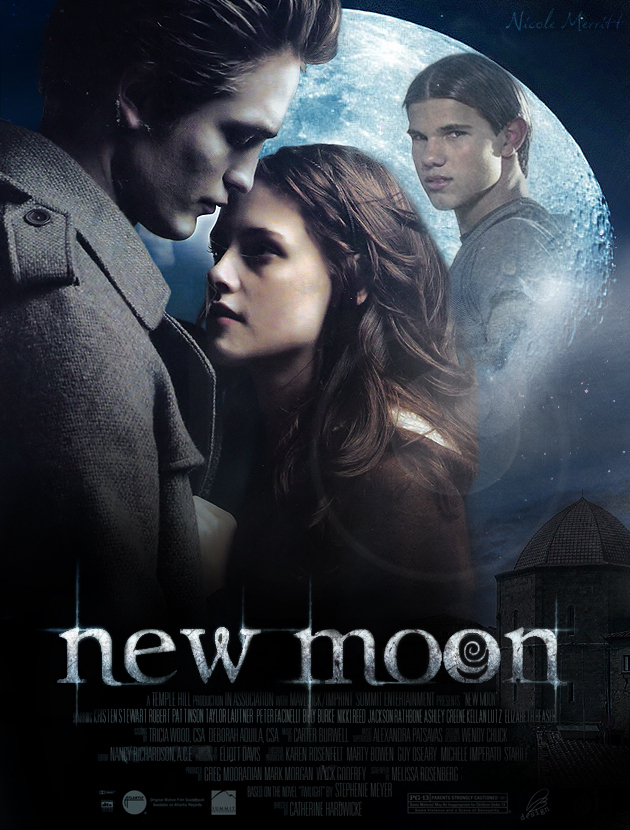
New Moon is a more complicated book than Twilight was. Most of this second book concentrates on Bella and Jacob, and Edward only puts in an appearance near the end. But what a grand appearance he does make, which is written very well in the book, and portrayed quite nicely by the two young stars of the movie (Robert Pattinson and Kristen Stewart). I don't want to give away too many of the details in case there is that rare somebody out there who has not read the book yet. But there are many parallels to the Romeo and Juliet saga interwoven through New Moon, and Stephenie Meyer manages to do a good job continuing the story of young love and conflicted allegiances with intensity. The film adaptation can only add to the mania for the book.
Here's the trailer for New Moon, the movie.
I'll see you there.
Sunday, November 8, 2009
Amazing Rare Things: the art of natural history in the age of discovery by David Attenborough, Susan Owens, Martin Clayton and Rea Alexandratos
 Leonardo da Vinci observed that "The eye is the chief means whereby the understanding may most fully and abundantly appreciate the infinite works of nature." This book is a feast for the eyes and a real treat to anyone who is interested in natural history. David Attenborough is one of the pioneers of the nature documentary and this publication is the result of a collaboration between the Royal Collection and Sir David, who assisted the curators of the Collection in their choice of work for the exhibition. He also wrote the introductory essay and detailed comments on many of the works that were included.
Leonardo da Vinci observed that "The eye is the chief means whereby the understanding may most fully and abundantly appreciate the infinite works of nature." This book is a feast for the eyes and a real treat to anyone who is interested in natural history. David Attenborough is one of the pioneers of the nature documentary and this publication is the result of a collaboration between the Royal Collection and Sir David, who assisted the curators of the Collection in their choice of work for the exhibition. He also wrote the introductory essay and detailed comments on many of the works that were included.
The book contains 87 watercolors that date from a 250 year period between the late fifteenth and early eighteenth centuries, and 160 full color illustrations. The artwork is breathtakingly beautiful and perfectly captures the profound joy that all feel who observe the natural world with devotion and intensity.

This is a book you will want to curl up in a chair and linger over. It is a lovely history of the human desire to illustrate the natural world.

Saturday, November 7, 2009
Happy National Bookstore Day!

Publishers Weekly has designated November 7, 2009, as National Bookstore Day--A day devoted to celebrating bookselling and the vibrant culture of bookstores.
One of my favorite places to go (besides a library) is a bookstore. I have always loved hanging out there. When I lived in the Chicago area, and worked at the U of C (in the Hyde Park area), there was a used bookstore on every other corner. It was my favorite lunch-time activity, to browse the used bookstores. I could always find a treasure there.
When I moved here to Kentucky, I was surprised that there were no bookstores in the town I lived in. The closest one was 27 miles away. That took some getting used to for me. So I'm glad to see Publishers Weekly giving the thumbs up to the culture of bookstores. I know that bookstores have had a hard time lately with the advent of e-books and the growth of on-line super stores like Amazon. I do think it's fitting to ponder the role that bookstores play in our society. So stop in to a local book shop and have a look around. You may like what you see.
Sunday, October 25, 2009
Family Linen by Lee Smith
 Lee Smith is a very fine contemporary southern writer. She grew up in the Appalachian mountains of southwestern Virginia and is married to journalist Hal Crowther. Dorothea Benton Frank (another wonderful author of low country tales) calls her an artist of the first order and arguably one of the most important voices in American fiction writing today.
Lee Smith is a very fine contemporary southern writer. She grew up in the Appalachian mountains of southwestern Virginia and is married to journalist Hal Crowther. Dorothea Benton Frank (another wonderful author of low country tales) calls her an artist of the first order and arguably one of the most important voices in American fiction writing today.Lee Smith says she wrote Family Linen after seeing a news story in the Raleigh newspaper about a schoolteacher who under hypnosis revealed a terrifying childhood experience where she had witnessed her mother kill her father, then chop him up and stuff him down an outhouse. The teacher confronted her mother, a pillar of the community, and her mother immediately drove her car out into the middle of a tobacco field and shot herself.
Family Linen starts out with a repressed memory of murder brought out by a hypnotist, then with rambling style and much humor leads us through a funeral that leads to a family reunion, during the course of which the family's secrets are aired like dirty linen. Smith's characters are entertaining, but behind the humor is some serious stuff. Smith has a special knack of combining humor, sadness, absurdity, horror, and tragedy with great skill and understanding. This book is full of those outrageous eccentrics that seem to inhabit the south, but the writing style is everyday, colloquial, and distinctly American. It is an absorbing novel of family life with all its various dysfunction and hilarity.
Friday, October 23, 2009
Stitches by David Small
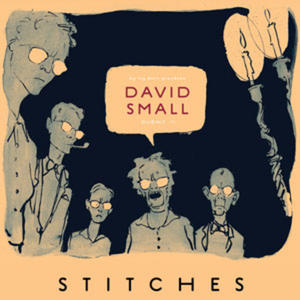
Sunday, October 18, 2009
The Bluegrass Conspiracy by Sally Denton
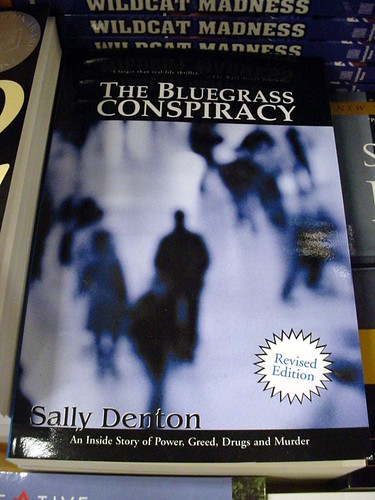
When Lexington native Drew Thornton parachutes to his death in September of 1985, carrying thousands in cash and 150 pounds of cocaine--it is the start of a scandal that reaches into the top secret levels of the U.S. government. Thornton worked for "The Company", a crime ring composed of Lexington socialites that was involved in gun running and drug smuggling and seemed to have major connections to South America and various drug cartels. Ralph Ross, a tenacious Kentucky State Police officer, leads a heroic fight against this web of corruption and is almost destroyed in the process.
This book is probably a must read for native Kentuckians and is a fascinating and compelling read for anyone who is interested in true crime/organized crime. It is an inside story of power, greed, drugs, and murder. The book was so controversial upon its initial publication in 1990 that it was pulled from publication and only recently been given a new printing. Sally Denton has written a fascinating book about cops, drugs, politics, and violence that will keep you engrossed to the last page.
Friday, September 18, 2009
Tuesday, September 15, 2009
The Magician's Elephant by Kate DiCamillo

Kate DiCamillo's books are pure magic. They are usually written for juveniles and young adults, but I think adults are really missing out if they don't read her stuff. One Amazon reviewer said about this book "her writing is getting even better and with this story I think we may be seeing the beginning of a transcendence to the creation of a storyteller easily in league with Aesop, the Brothers Grimm and Frank L. Baum. I am aware that sounds sycophantic - trust me I am not. In fact, I would really like to hate her for writing so well, as an aspiring writer myself, but there is no denying the quality of this story." And I think that sums up quite nicely how I too feel about DiCamillo's writing. She is a master storyteller.
Peter Augustus Duchene, a ten year old boy, goes to the market for fish and bread but spends the money with a fortuneteller instead. When he asks the fortuneteller about his long lost sister, he is given a cryptic message: "follow the elephant...she will lead you there."
What follows is a fanciful fable with rich language and brilliant imagery. It's about loss, hope, love and home. It's somber and atmospheric and sweet and allegorical. It's the kind of book that just begs to be read aloud and I could easily picture this one becoming a favorite for family night reading in many homes around the country, especially on a cold snowy night in front of the fire.
I really hope adults will pick this book up and read it. It is a treat, and if you weren't a fan of hers already, you will become one.
Friday, September 11, 2009
Friday, September 4, 2009
Wednesday, August 26, 2009
The Complete Guide to Prehistoric Life by Tim Haines and Paul Chambers

We just received a copy of this book that I catalogued for the Branch, and I have to say it has in it some of the most spectacular pictures of dinosaurs I've ever seen. It's like stepping back in time and having them appear right in front of you, so life-like that you feel the breath from a roar or the water droplets shaken from an aquatic beast.
This visual encyclopedia of prehistoric animals would appeal to anyone who has a fascination with the prehistoric world and the dinosaurs who ruled it. It features over 100 of the largest, weirdest and scariest animals that ever existed. Many of these creatures have never been illustrated before. This book is packed with information on the biology, lifestyle and behavior of these creatures, as well as what they ate, how they raised their young, how they survived, and the landscapes in which they lived.
 This book is a visual feast from the creators of the highly acclaimed "Walking with Dinosaurs" series.
This book is a visual feast from the creators of the highly acclaimed "Walking with Dinosaurs" series.The book is divided into three parts: Part One, The Rise of Life; Part Two, The Age of Reptiles, and Part Three, The Age of Beasts. Using the latest digital techniques they have been able to range across time and bring back to life the weirdest collection of creatures you could ever imagine. What a treat this book is.
Sunday, August 23, 2009
The Library: an Illustrated History by Stuart A. P. Murray
 This is a fascinating book incorporating beautiful illustrations and images and insightful quotations and descriptions to take us on an informative journey through the history of our libraries. It is an eloquent account of this indispensable and remarkable institution from its earliest times to the present. "A great library cannot be constructed," the nineteenth-century Scottish historian John Hill Burton reminded us in The Book Hunter, "It is the growth of ages."
This is a fascinating book incorporating beautiful illustrations and images and insightful quotations and descriptions to take us on an informative journey through the history of our libraries. It is an eloquent account of this indispensable and remarkable institution from its earliest times to the present. "A great library cannot be constructed," the nineteenth-century Scottish historian John Hill Burton reminded us in The Book Hunter, "It is the growth of ages."After the bombing of Pearl Harbor, the charismatic mayor of New York City, Fiorello H. La Guardia, took to the airwaves for a series of Sunday night broadcasts in which he would speak directly to his constituents, keeping them appraised of world events, giving them all an encouraging pep talk. At the end of each program, it was his custom to conclude his remarks with the words "patience and fortitude", calm advice that he felt would see everyone safely through the long ordeal that lay ahead. So inspirational was his message of comfort and hope that "Patience and Fortitude" were adopted as the unofficial names of the majestic lions carved from pink Tennessee marble that guard the entryway to the New York Public Library on Fifth Avenue in Manhattan. With concern in some quarters that technology has rendered 21st century libraries quaint and archaic, these names have taken on renewed significance.
In the early months of 2009, when we faced a financial crisis, news reports began to crop up that libraries were busier than ever, a circumstance made especially curious by the fact that so many of them were among the first to suffer severe cutbacks in funding. In New York, attendance for 2008 was up 13 percent over the previous year, circulation reached 21.1 million items, an increase of close to 4 million. Similar patterns were evident from coast to coast, with the ALA reporting more active borrowing cards in use nationally than at any other time in history. Americans visited their libraries some 1.3 billion times in 2008, and checked out more than 2 billion items. "It's a national phenomenon," the ALA's president told NBC News. "Library use is up everywhere." Too bad it takes hard times for some people to appreciate libraries.
This volume speaks to the book lover in all of us, while offering a panoramic view of the history of libraries across the centuries.
Four Spirits by Sena Jeter Naslund
 In the early days of the civil rights conflicts, Birmingham, Alabama was infamous for its racial injustice. Police Chief Bull Connor, the Reverend Martin Luther King Jr., lunch counter sit-ins, the Klan, and the bombing of the church where four little girls died...all play a part in this book that brings to life the shameful history of our nation's past. Having grown up in Alabama, not far from Birmingham, and experienced first hand some of these inequities when I was a girl, I was very interested in reading Naslund's account.
In the early days of the civil rights conflicts, Birmingham, Alabama was infamous for its racial injustice. Police Chief Bull Connor, the Reverend Martin Luther King Jr., lunch counter sit-ins, the Klan, and the bombing of the church where four little girls died...all play a part in this book that brings to life the shameful history of our nation's past. Having grown up in Alabama, not far from Birmingham, and experienced first hand some of these inequities when I was a girl, I was very interested in reading Naslund's account.Some people have found it hard to keep up with the characters, and I must admit that I had a bit of trouble myself in the first part of the book. But once Naslund sets up the framework of the book, and once I got the characters straight, the sensuous language of the book told the story beautifully. Naslund is a very gifted writer and knows the human heart well and her writing can be very reflective and somber and soaring all at the same time. It's a book that will probably not be a quick read, because it is chock full of real and imagined characters who's lives intersect as they persevere in their struggle for equality, but it is one that you should read and savor in bits and pieces enjoying Naslund's skill in capturing the turmoil and heartbreak of the time.
Wednesday, August 19, 2009
Pat Conroy is back
'South of Broad' Ends Pat Conroy's...
Books Aren't Dead

Tuesday, August 18, 2009
Britain's Most Avid Reader
 Louise Brown: She borrows mainly large print books because she is partially sighted, and has almost worked her way through her local library's entire stock.
Louise Brown: She borrows mainly large print books because she is partially sighted, and has almost worked her way through her local library's entire stock. Louise Brown, 91, has read up to a dozen books a week since 1946 without incurring a single fine for late returns.
Library staff in Stranraer, Dumfries and Galloway, say the pensioner's rapacious reading habits over 60 years could earn her a place in the record books.
Mrs Brown, a widow, said: "My parents were great readers and I've always loved books. I started reading when I was five and have never stopped. I like anything I can get my hands on."
She said her favourite genres are family sagas, historical novels and war stories, but added: "I also like Mills and Boon for light reading at night."
She said she had read too many books to have a favourite or top five, but if she had to choose a preferred genre it would be family sagas or historical novels.
Over the past six decades she has borrowed at least six books every week throughout each year and has recently increased that to about 12 every seven days.
"Although she has borrowed nearly 25,000 books, she has never once had to pay an overdue charge.The staff at Stranraer Library think she's a remarkable lady and look forward to her weekly visits. They would like to know if anyone can beat her reading record."
Friday, August 14, 2009
Face by Sherman Alexie
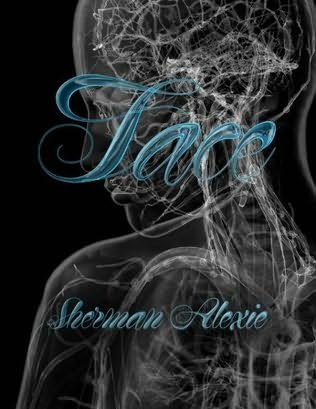 The New York Times Book Review has said that Mr. Alexie is one of the major lyric voices of our time. I would have to agree. I love his poetry. Kiowa novelist and poet N. Scott Momaday won a Pulitzer in 1969 for "House Made of Dawn" and is a talented native american writer. Leslie Marmon Silko and Joy Harjo are two more native american writers that I admire. But I think Sherman Alexie is probably the most famous native writer in the land, and has been for years now. His work is funny, self-deprecating, profound, and above all honest. He was born and raised on the rez and that background is a rich source of material for his writing. There is a taste of poetic genius in his poems. He writes sometimes in sonnets, rhymed couplets, short quatrains, villanelles, and even manages to incorporate footnotes. The title of one of the poems in the book gives you a clue to Sherman's poetic approach. It's called "Comedy is Simply a Funny Way of Being Serious." His verse is sometimes confrontational and therefore he is controversial and maybe not everybody's cup of tea. But I find him truly amazing and thought provoking and I look forward to anything new from him that comes along.
The New York Times Book Review has said that Mr. Alexie is one of the major lyric voices of our time. I would have to agree. I love his poetry. Kiowa novelist and poet N. Scott Momaday won a Pulitzer in 1969 for "House Made of Dawn" and is a talented native american writer. Leslie Marmon Silko and Joy Harjo are two more native american writers that I admire. But I think Sherman Alexie is probably the most famous native writer in the land, and has been for years now. His work is funny, self-deprecating, profound, and above all honest. He was born and raised on the rez and that background is a rich source of material for his writing. There is a taste of poetic genius in his poems. He writes sometimes in sonnets, rhymed couplets, short quatrains, villanelles, and even manages to incorporate footnotes. The title of one of the poems in the book gives you a clue to Sherman's poetic approach. It's called "Comedy is Simply a Funny Way of Being Serious." His verse is sometimes confrontational and therefore he is controversial and maybe not everybody's cup of tea. But I find him truly amazing and thought provoking and I look forward to anything new from him that comes along.And here is a quote from Mr. Alexie that I really enjoyed, as it pertains to librarians. And by the way, just so you know, I'm a tour guide!
"During my journeys in the children's book world, I have found that librarians enjoy a kind of promotional power that they don't have in the adult book world. And, generally speaking, I've also found there are two types of librarians: the gatekeepers and the tour guides. The gatekeepers are the traditionalists of children's literature. They seem to be far more culturally and aesthetically conservative, and are wary and sometimes censorious of contemporary realism (sex, drugs, and rock 'n roll). These librarians seek to promote a few great books, often historical classics (To Kill a Mockingbird) that they believe should be read by everybody. These librarians are a minority. A large majority of librarians are tour guides who seek to find the one book that matches the loves and hates of any one reader. These librarians could very well hand To Kill a Mockingbird to a certain reader, but they are more apt to deliver Walter Dean Myers or Sonya Sones or E. Lockhart or Chris Crutcher. My summary? Gatekeepers favor the book; tour guides favor the reader."
Friday, August 7, 2009
The Lovely Bones
Thursday, August 6, 2009
1969 Revisited

Not only did we just celebrate the 40th anniversary of the moon landing, but it is also the 40th anniversary of another auspicious event that occurred in 1969--Woodstock. Michael Lang's book is the story of how those three days of peace and love and music came about.
It was also the 40th anniversary of the Manson murders.


Charles Manson - Helter Skelter and Beyond is a biography of Charles Manson, the infamous convict charged with murder and conspiracy to murder in the late 1960's. Manson formed and led the "Manson Family" to heinously commit the Tate-LaBianca murders. Helter Skelter, a reference to a Beatles song, is forever connected to the Manson murders; but by his own account, Helter Skelter was a term Manson used to predict and produce an apocalyptic racial war between whites and blacks. Charles Manson and the Manson Family murders have become a symbol of evil, bloody violence, and the macabre.
NPR had a list of racy reads from that landmark year from their special series Three Books, which features great reads on a single theme. Click here.
Wednesday, August 5, 2009
Flooding at Louisville Library
 Waterlogged library books were strewn across the lower level of Louisville’s main library on Tuesday after a thunderstorm soaked downtown and flooded parts of the city. Libary Director Craig Buthod says computers and “tens of thousands of books” have been lost to the water damage. He says three bookmobiles, staff vehicles and even his car were under water in the underground parking garage.Mayor Jerry Abramson says the damage will likely exceed $1 million in the downtown library.The director estimates at least three feet of standing water was inside the lower level Tuesday afternoon. Along with the lost books, several computers that were headed to a new library branch were ruined.
Waterlogged library books were strewn across the lower level of Louisville’s main library on Tuesday after a thunderstorm soaked downtown and flooded parts of the city. Libary Director Craig Buthod says computers and “tens of thousands of books” have been lost to the water damage. He says three bookmobiles, staff vehicles and even his car were under water in the underground parking garage.Mayor Jerry Abramson says the damage will likely exceed $1 million in the downtown library.The director estimates at least three feet of standing water was inside the lower level Tuesday afternoon. Along with the lost books, several computers that were headed to a new library branch were ruined.He said people who want to donate to help pay for the damage can mail checks to: The Library Foundation, 301 York St., Louisville, KY 40203, Attn: Flood. Or they can call, 574-1709 for information.
Trivia
Saturday, August 1, 2009
The Big Thrill
 If you enjoy thrillers, here's a link to the latest webzine put out by the International Thriller Writers. There's even a spot on here where you can sign up for their monthly emails to keep up with information on the latest thrillers being published that month, along with in-depth stories and interviews. There's also a chance to win first edition signed thrillers by your favorite authors. What are you waiting for?
If you enjoy thrillers, here's a link to the latest webzine put out by the International Thriller Writers. There's even a spot on here where you can sign up for their monthly emails to keep up with information on the latest thrillers being published that month, along with in-depth stories and interviews. There's also a chance to win first edition signed thrillers by your favorite authors. What are you waiting for?
Wednesday, July 29, 2009
100 Best Beach Books Ever

NPR's audience recently picked the 100 Best Beach Books Ever. Here's the link. It's not a bad list overall. I've read 49 of the 100 recommended, and some of my favorites are definitely on the list. Have a look and see what you think. If you are getting ready to take a vacation or just spending some time at home relaxing, you might want to try a couple of books from this list.
Sunday, July 26, 2009
Can't Wait to Get to Heaven by Fannie Flagg
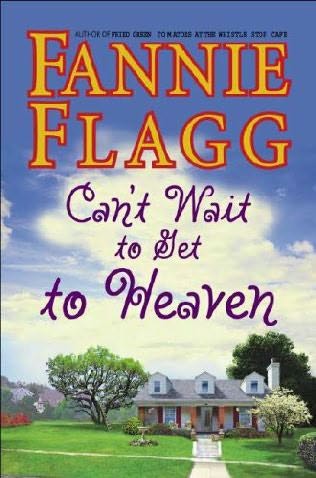 What a joyful treat it is to read a Fannie Flagg book. She is definitely one of my favorite southern writers. If you like your green tomatoes fried and your ice tea sweet, Fannie should be on your to read list. Fannie began writing and producing television specials when she was only 19 and went on to become an actress and writer for film, theater, and TV. She's an Alabama girl (like me), and her books are always rich, comedic, and charming with poignant narrative.
What a joyful treat it is to read a Fannie Flagg book. She is definitely one of my favorite southern writers. If you like your green tomatoes fried and your ice tea sweet, Fannie should be on your to read list. Fannie began writing and producing television specials when she was only 19 and went on to become an actress and writer for film, theater, and TV. She's an Alabama girl (like me), and her books are always rich, comedic, and charming with poignant narrative.In this book we return to Elmwood Springs and a set of characters we first met in "Welcome to the World Baby Girl" and then revisited in "Standing in the Rainbow".
Norma Warren's aunt, Elner Shimfissle (a minor character in the other books who commands center stage in this one), accidentally disturbs a nest of wasps while picking figs from a tree in her yard, and after receiving multiple stings, falls from the ladder knocking herself out. The next thing she knows she is off on the strangest adventure of her life. Meanwhile Norma's high strung niece faints and takes to her bed, Elner's neighbor Verbena rushes to the Bible, her truck driver friend Luther runs his 18 wheeler into a ditch and the entire town is thrown for a loop and left wondering what life is all about anyway.
The best thing about this book is the characters. They have an obvious love for one another and Fannie manages to capture that close-knit feeling of community that is prevalent in small town life. One of my favorite characters is Tot Wooten, from the Tell it Like it Is Beauty Shop, who is concerned that the end of the world will come before she can collect her social security.
The book is packed with morals, messages, and home spun wisdom and Fannie's trademark humor applied to social commentary. There are even some bonus recipes in the back, including Neighbor Dorothy's Heavenly Caramel Cake, a recipe as sweet as the book itself. These same characters and situations might seem a bit corny in somebody else's hands, but Fannie manages to pull it off with aplomb and style. You know these people, and more importantly, you love these people. And we all learn together that heaven is actually right here, right now, with people you love, neighbors you help, and friendships you keep.
40th Anniversary of Moon Landing
 July 20, 2009 marks the 40th Anniversary of the Apollo moon landing. The act of landing a man on the moon and returning him safely to earth requires three things: the proper spacecraft, the appropriate launch vehicle, and the requisite spacesuit. This is a book that is lovingly devoted to that last requirement. It is a series of dramatic photographs of the Smithsonian Air and Space Museum's collection. It also includes never before seen historical images of spacesuit development and testing. It is a feast for the eyes and worthy of any space enthusiast's bookshelf.
July 20, 2009 marks the 40th Anniversary of the Apollo moon landing. The act of landing a man on the moon and returning him safely to earth requires three things: the proper spacecraft, the appropriate launch vehicle, and the requisite spacesuit. This is a book that is lovingly devoted to that last requirement. It is a series of dramatic photographs of the Smithsonian Air and Space Museum's collection. It also includes never before seen historical images of spacesuit development and testing. It is a feast for the eyes and worthy of any space enthusiast's bookshelf. This book manages to capture the magnificence of the Apollo program probably better than any other book. It combines quotes from 23 of the 24 Apollo lunar astronauts with 160 images taken from NASA's new high-resolution scans of the photos the astronauts took during the missions. The astronauts tell their experiences in intimate detail and their deeply personal reflections allow their distinct personalities and varied perspectives to really come through. It is a unique chronicle of a historic moment in time.
This book manages to capture the magnificence of the Apollo program probably better than any other book. It combines quotes from 23 of the 24 Apollo lunar astronauts with 160 images taken from NASA's new high-resolution scans of the photos the astronauts took during the missions. The astronauts tell their experiences in intimate detail and their deeply personal reflections allow their distinct personalities and varied perspectives to really come through. It is a unique chronicle of a historic moment in time.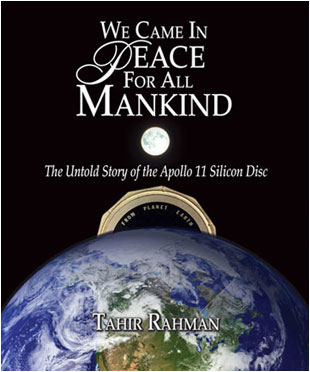 In the harsh environment of the moon's Sea of Tranquility lies a tiny silicon disc bearing messages of good will from the nations of the earth. In the four decades since Neil Armstrong and Buzz Aldrin left it behind these messages have gone largely unread. Now we have a commemorative book which takes us back to that moment when transcending politics the entire human race really were one. It is a lesson that many nations might learn from today, and I only hope that this little gem of a book gets wide dissemination.
In the harsh environment of the moon's Sea of Tranquility lies a tiny silicon disc bearing messages of good will from the nations of the earth. In the four decades since Neil Armstrong and Buzz Aldrin left it behind these messages have gone largely unread. Now we have a commemorative book which takes us back to that moment when transcending politics the entire human race really were one. It is a lesson that many nations might learn from today, and I only hope that this little gem of a book gets wide dissemination.
Wednesday, July 8, 2009
Awful Library Books

Time Magazine's Dan Fletcher wrote about a couple of Detroit area librarians who started a blog called "Awful Library Books". Apparently they were frustrated by the aging books in their stacks and looking for a way to punch up an upcoming speech. As the article says, they have certainly struck a nerve with frustrated librarians, who have to deal with such anthropological finds on their shelves because libraries lack funds to update their collections. Weeding shelves is a task that requires proper funding. Let's hope that their blog highlights the need for such funding and in the meantime we can laugh at some of the entries they list.
Monday, July 6, 2009
Signing Their Lives Away: the fame and misfortune of the men who signed the Declaration of Independence by Denise Kiernan & Joseph D'Agnese

"The only way to make a library safe is to lock people out of it. As long as they are allowed to read the books 'any old time they have a mind to,' libraries will remain the nurseries of heresy and independence of thought. They will, in fact, preserve that freedom which is a far more important part of our lives than any ideology or orthodoxy, the freedom that dissolves orthodoxies and inspires solutions to the ever-changing challenges of the future. I hope that your library and mine will continue in this way to be dangerous for many years to come."
What a terrific quote, and so appropriate for this post Independence Day posting. And speaking of heroes, several of the brave men who signed the Declaration of Independence would probably no doubt be at home on such a list. This terrific little book was my Independence Day reading this year and I have found it quite fascinating.
In 1776, fifty-six men risked their lives, their fortunes, and their sacred honor to defy the British and sign America's birth certificate--our most celebrated document, and a model for other struggling peoples the world over. Most people could probably correctly identify John Hancock, Thomas Jefferson, Benjamin Franklin, and maybe even John Adams. But after them, a lot of people would be hard pressed to name any others. But all these men are worth knowing, and this book does a good job of filling us in on the remarkably interesting lives of a group who came together one sweltering summer under distressing circumstances and despite big differences in opinion and background crafted a document that formed a new nation. Some of these men prospered and rose to the highest levels of government, and some of them had their homes and farms seized by the British. They were statesmen, soldiers, slaveholders, and even a scoundrel or two. The book jacket is a copy of the Declaration itself, and in addition to the individual portraits of the signers, the book contains a Time Line and selected bibliography.
If you have an interest in that period of American history, but don't want to wade through some of the more dense offerings, this book is informative and entertaining and easily digested with its 3-4 page outlines of each signer. This is a book that would appeal to history buffs of all ages.
In conjunction with the publication of "Signing Their Lives Away,” the authors are traveling in the footsteps of these revolutionaries. The result: a documentary feature and a 13-part film series that examines not only their legacy, but the state of the American Dream and our own ideas about independence. Under the Trailers section, there are several short films about the signers. Click here to learn more.
Saturday, July 4, 2009
Newsweek's Top 100 Books of All Time

You can really get in trouble by trying to make a top 100 Books list. I mean, it's purely subjective isn't it, and who's to say that their list is the absolute gospel? What Newsweek did was crunch the numbers from ten top books lists (Modern Library, the New York Public Library, St. John's College reading list, Oprah's, and more) to come up with The Top 100 Books of All Time. I think I would agree with a large number of the books on their list, though I might argue ranking, and I might argue for some notable omissions. See what you think. And as Newsweek says--let the debate begin.
List
Wednesday, July 1, 2009
Surprising Facts about 10 Bestselling Authors (Courtesy of Mental Floss Magazine)
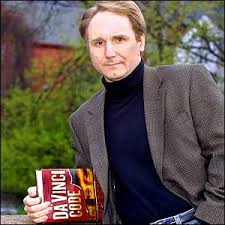 1. Dan Brown didn’t get his start as a writer. Oh, no. Before he penned thrillers like The Da Vinci Code, Brown worked as a pop singer and songwriter. His second solo album, Angels & Demons, even shared its title with one of his literary juggernauts.
1. Dan Brown didn’t get his start as a writer. Oh, no. Before he penned thrillers like The Da Vinci Code, Brown worked as a pop singer and songwriter. His second solo album, Angels & Demons, even shared its title with one of his literary juggernauts.
2. Former lawyer and politician John Grisham may not need to practice law now that he’s moved 250 million copies of his books, but he did head to court on one special occasion after his literary success. In 1996 Grisham returned to the courtroom to represent the family of a railroad brakeman who was killed on the job. Apparently Grisham still had his chops; he won the case (and over $650,000) for the family.
 3. Nora Roberts has been a staple on the New York Times Bestseller List for years, but it wasn’t easy for her to get her foot in the door. According to Roberts, when she was submitting her manuscripts to romance giant Harlequin, the publisher sent her a note rejecting her work because they “already had their American writer.”
3. Nora Roberts has been a staple on the New York Times Bestseller List for years, but it wasn’t easy for her to get her foot in the door. According to Roberts, when she was submitting her manuscripts to romance giant Harlequin, the publisher sent her a note rejecting her work because they “already had their American writer.” 4. Danielle Steel’s life sounds surprisingly like something from a Danielle Steel novel. The author has been married five times, and there have been some real winners in the bunch. According to the San Francisco Chronicle, husband number two was a bank robber who was convicted of raping a woman while he was married to Steel, and the third Mr. Steel was a heroin-addicted burglar.
4. Danielle Steel’s life sounds surprisingly like something from a Danielle Steel novel. The author has been married five times, and there have been some real winners in the bunch. According to the San Francisco Chronicle, husband number two was a bank robber who was convicted of raping a woman while he was married to Steel, and the third Mr. Steel was a heroin-addicted burglar. 5. The late Sidney Sheldon wrote a whole raft of bestsellers even though he didn’t start writing novels until after he turned 50. Sheldon kept himself pretty busy before his career took off, though, by creating TV hits like The Patty Duke Show and I Dream of Jeannie. Sheldon also won an Oscar for Best Original Screenplay for penning The Bachelor and the Bobby-Soxer.
5. The late Sidney Sheldon wrote a whole raft of bestsellers even though he didn’t start writing novels until after he turned 50. Sheldon kept himself pretty busy before his career took off, though, by creating TV hits like The Patty Duke Show and I Dream of Jeannie. Sheldon also won an Oscar for Best Original Screenplay for penning The Bachelor and the Bobby-Soxer.

7. Having Stephen King as your dad has its perks. In the late 80s, King’s son Owen was just as obsessed with G.I. Joe as any other boy. Owen, though, got a little shout-out most of us didn’t receive. When Hasbro introduced the new G.I. Joe Sneak Peek in 1987, the character’s promotional materials stated that his real name was “Owen S. King,” a gesture that may have stemmed from Owen’s dad helping to create another G.I. Joe character.


9. Jodi Picoult has enjoyed quite a bit of success as a novelist, but she’s also dabbled in comics. In 2007, she wrote a five-issue arc for Wonder Woman.



























